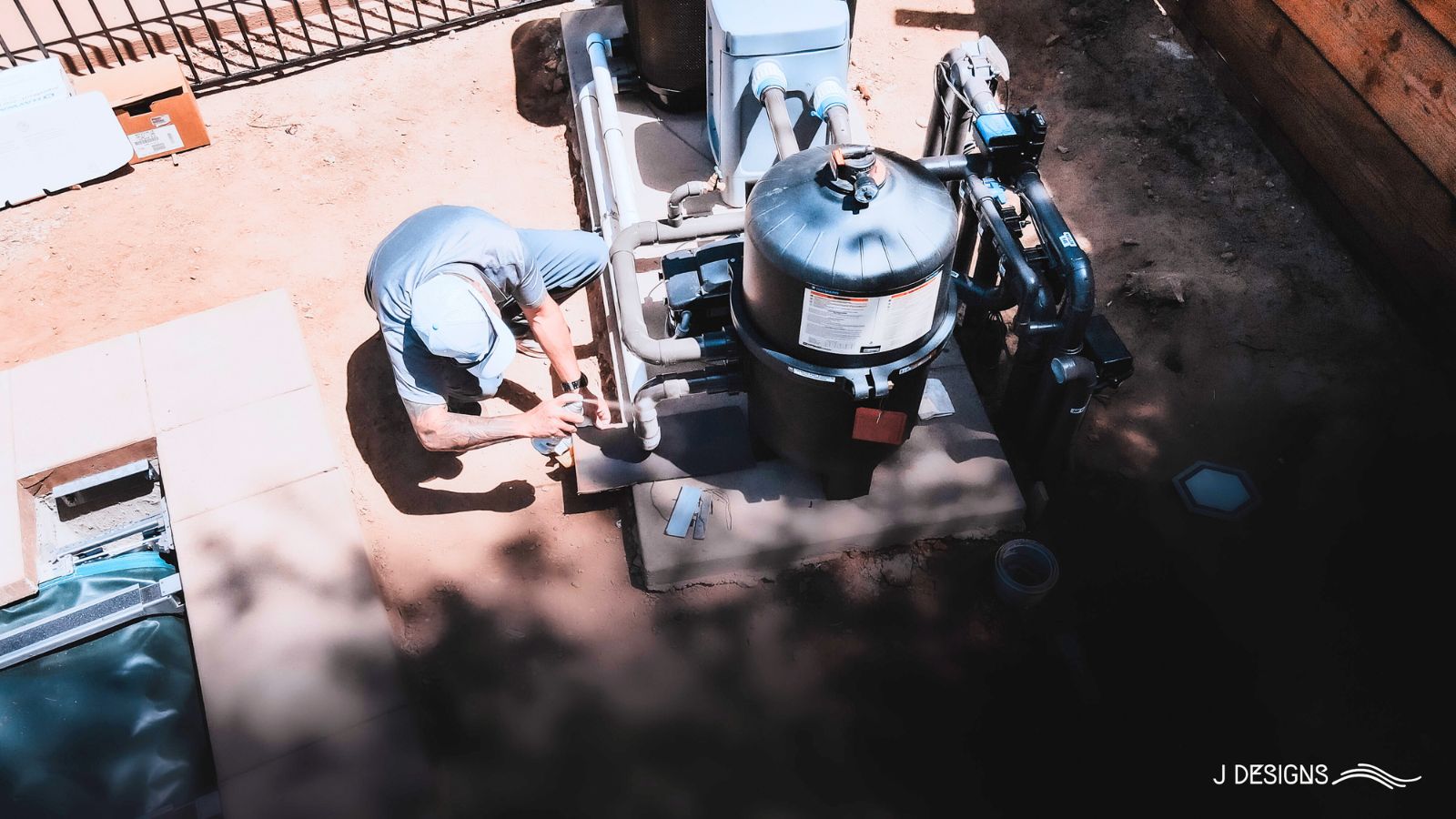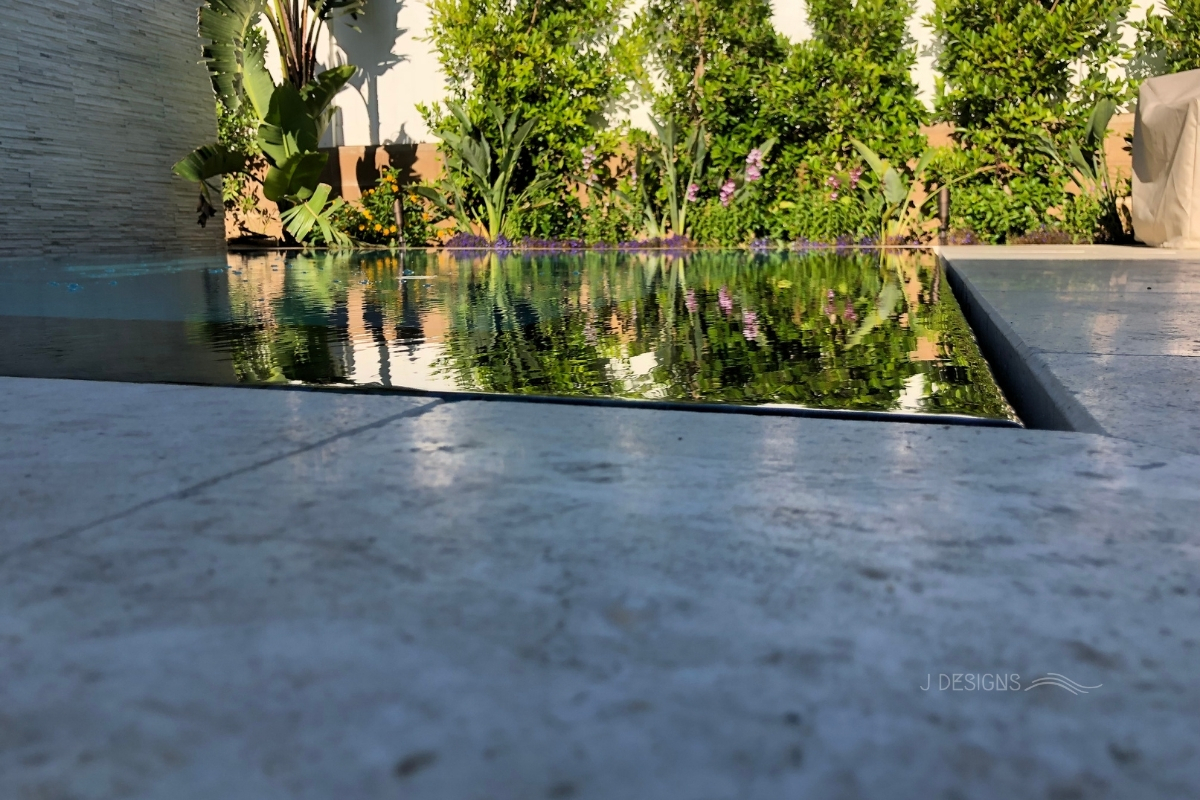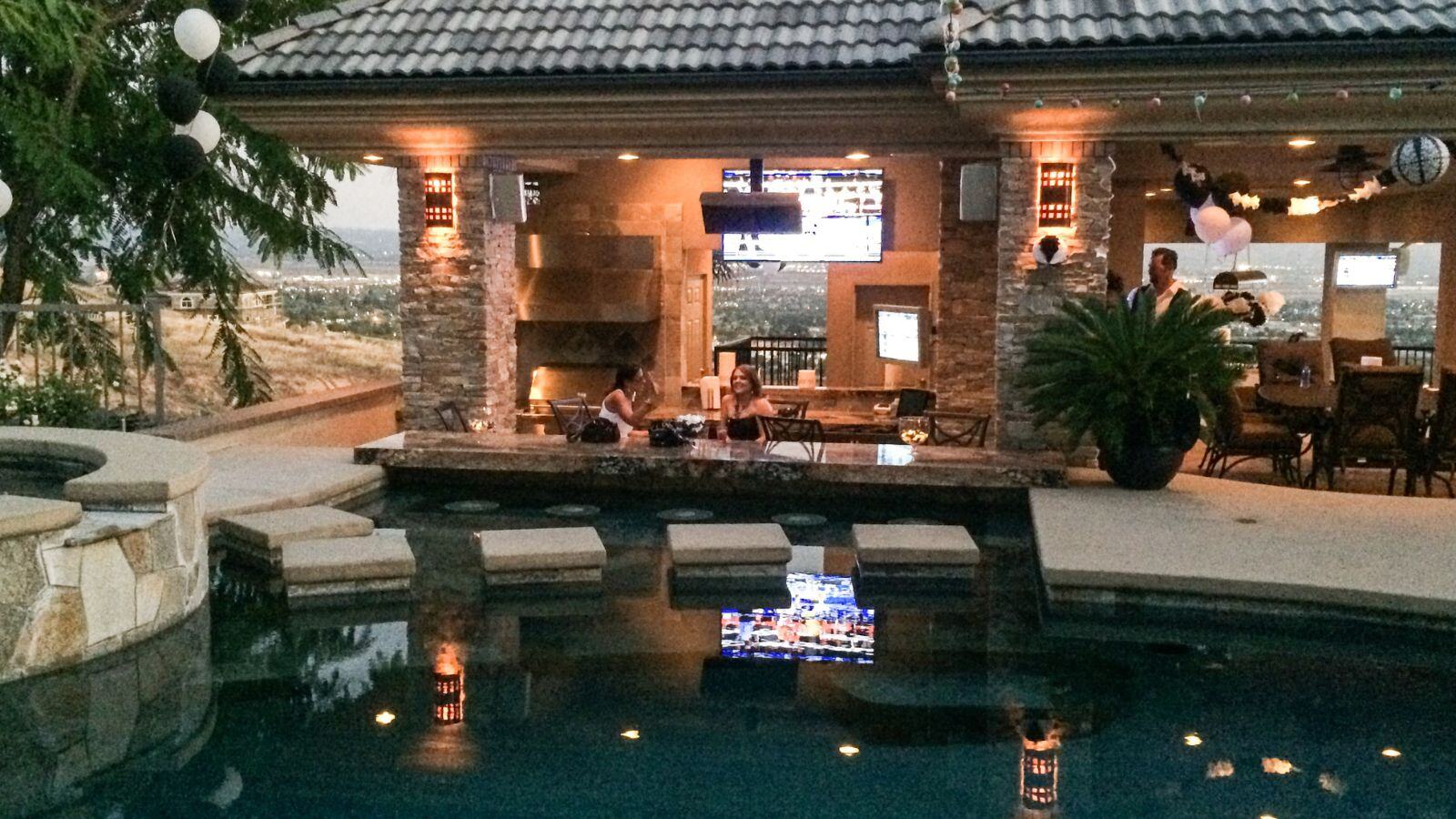Professional Pool Service: Why True Value Goes Beyond Price
When it comes to pool service, expertise is not optional; it’s required by law. In Los Angeles County, anyone performing maintenance, disinfection,...

Effective pool plumbing isn’t just a pipe dream. If your pool plumbing isn’t up to par, you’re likely facing high energy bills, frequent repairs, and potential safety hazards. Proper plumbing is vital for efficient, safe, and enjoyable swimming pools, and getting it right from the start is crucial.
At J Designs Pool and Spa, our expertise in pool plumbing ensures your pool is functional and safe. With over 300 pool systems constructed over 15 years, we are your trusted partner in achieving the perfect pool setup.
By the end of this article, you'll understand the essentials of pool plumbing sizing and circulation to ensure your pool's safety and efficiency.
 The Virginia Graeme Baker Pool and Spa Safety Act (VGBA) is a federal law enacted to eliminate the hazard of swimming pool and spa entrapment. Signed into law on December 19, 2007, this act directs the Consumer Product Safety Commission to protect the public from risks associated with pool drains, which are classified as consumer products under the ANSI/APSP/ICC-16, 2017 safety standard.
The Virginia Graeme Baker Pool and Spa Safety Act (VGBA) is a federal law enacted to eliminate the hazard of swimming pool and spa entrapment. Signed into law on December 19, 2007, this act directs the Consumer Product Safety Commission to protect the public from risks associated with pool drains, which are classified as consumer products under the ANSI/APSP/ICC-16, 2017 safety standard.
Compliance with the VGBA is crucial for pool owners to ensure their pools meet federal safety standards, preventing accidents and ensuring peace of mind. This regulation impacts pool plumbing, requiring specific standards to be met.
Pool plumbing must adhere to industry standards set by key organizations, such as the Pool and Hot Tub Alliance and the International Code Council (ICC).
These standards vary based on the pool's water volume, ensuring consistent filtration needs. Knowing these entities' roles is key for builders, designers, and pool owners to assure compliance with proper plumbing standards.
Pool plumbing is a specialized field that goes beyond regular mechanical engineering. While mechanical engineers can handle various system calculations, they might not be familiar with specific pool industry regulations and health department requirements.

Involving a licensed plumber with expertise in pipe sizing, circulation systems, and equipment specifications is crucial for the success of your pool project. Their specialized knowledge ensures that all aspects of your pool plumbing meet industry standards and safety regulations.
To ensure that pool water stays clean and safe, the circulation system must complete a full cycle of circulating all the water through the pump and filter within a specific time frame or turnover rate.
According to industry standards, the circulation system should be designed to circulate the entire pool water at least once every 12 hours. The system size should match the manufacturer's specified maximum flow rate of the filter, ensuring efficient turnover with a clean filter.

Per DOE Regulations, pumps are now rated based on power, not just horsepower. Properly sizing pool plumbing is essential for long-term planning and potential pump replacements. Finding an exact match might be tough if the pump breaks or needs replacing, leading to a mismatch with the existing plumbing.
A smart solution is installing a variable-speed pump to control water flow and meet requirements, even if the pump's capacity exceeds the original design. Proper sizing of pool plumbing ensures safety and efficiency.
To better understand this concept, think about when you're washing your car and the water hose can't reach it. You put your finger over the hose to increase the water pressure and make it reach the car. Plumbing systems operate in a similar way. If the pipes are too narrow for the water flow, it moves too quickly, which can be hazardous.
 Photo Courtesy of Hayward Pool Products
Photo Courtesy of Hayward Pool Products
For instance, imagine swimming in a pool with undersized pipes. As you turn around, the forceful water flow strikes and hurts your eye. Preventable injuries like these can range in severity, but they stem from wrong plumbing sizes.
Pool regulations prioritize safety. Having a dual drain is not enough; the entire plumbing system must meet specific requirements to prevent entrapment hazards and ensure pool safety. Plumbing codes set limits on water velocity and pressure to prevent accidents and ensure good filtration.
To guarantee a safe swimming environment, it's essential to have a proper plumbing design with controlled velocity and well-sized drains.
It is very important to have a plumber involved in the early stages of pool construction. They plan the number of pipes, their sizes, and where to put them.


Working with experts like plumbers, mechanical engineers, and experienced pool contractors helps to communicate plumbing needs effectively, including specific pipe sizes, equipment room capacity, and filtration considerations. This personal approach ensures a smooth construction process that perfectly matches the pool's size and specifications.
 Although design usually happens before pool construction, involving an experienced individual who understands pool construction is essential.
Although design usually happens before pool construction, involving an experienced individual who understands pool construction is essential.
This expert will ensure that the design is both visually appealing and functional. By addressing potential issues early on, they can avoid problems like water splattering or inadequate containment, resulting in a well-designed pool that meets your expectations.
After reading this article, you understand the correct pool plumbing sizing and circulation requirements and their importance in constructing safe and functional swimming pools.
Throughout our 15 years of experience, J Designs Pool and Spa has built hundreds of boutique pools with robust plumbing systems that exceed expectations. With a certified Watershape Professional on staff, we assist homeowners in understanding their pool’s plumbing, enabling them to identify and resolve potential issues in cooperation with our contractors.
Needless to say, when you entrust us with building your dream pool, we'll make sure your cup always runs over; the only thing that will run dry is your worries.
Interested in learning more? Here are some related articles that will bring more insights down the pipeline:
3 SIGNS IT’S TIME TO UPGRADE YOUR POOL’S PLUMBING
SURGE TANKS AND HOW THEY CAN HELP YOUR POOL: WHAT YOU NEED TO KNOW
.jpg)
When it comes to pool service, expertise is not optional; it’s required by law. In Los Angeles County, anyone performing maintenance, disinfection,...

Have you ever seen a pool that looks like a mirror? Water blends seamlessly into the edge, perfectly level with the deck, flowing evenly in every...

Pool season is here, and it’s not just about crystal-clear water anymore. Today’s most memorable backyards are multisensory experiences, and...